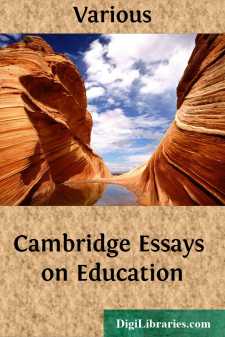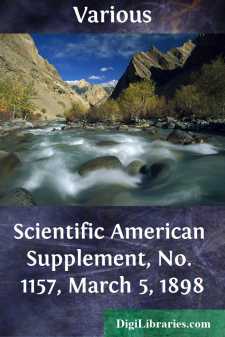Categories
- Antiques & Collectibles 13
- Architecture 36
- Art 48
- Bibles 22
- Biography & Autobiography 813
- Body, Mind & Spirit 142
- Business & Economics 28
- Children's Books 17
- Children's Fiction 14
- Computers 4
- Cooking 94
- Crafts & Hobbies 4
- Drama 346
- Education 46
- Family & Relationships 57
- Fiction 11829
- Games 19
- Gardening 17
- Health & Fitness 34
- History 1377
- House & Home 1
- Humor 147
- Juvenile Fiction 1873
- Juvenile Nonfiction 202
- Language Arts & Disciplines 88
- Law 16
- Literary Collections 686
- Literary Criticism 179
- Mathematics 13
- Medical 41
- Music 40
- Nature 179
- Non-Classifiable 1768
- Performing Arts 7
- Periodicals 1453
- Philosophy 64
- Photography 2
- Poetry 896
- Political Science 203
- Psychology 42
- Reference 154
- Religion 513
- Science 126
- Self-Help 84
- Social Science 81
- Sports & Recreation 34
- Study Aids 3
- Technology & Engineering 59
- Transportation 23
- Travel 463
- True Crime 29
Lippincott's Magazine of Popular Literature and Science, Vol. 26, October, 1880
by: Various
Description:
Excerpt
Those adventurous gentlemen who derive exhilaration from peril, and extract febrifuge for the high pressure of a too exuberant constitution from the difficulties of the Alps, cannot find such peaks as the Aiguille Verte and the Matterhorn, with their friable and precipitous cliffs, among the Rocky Mountains. The geological processes have been gentler in evolving the latter than the former, and in the proper season summits not less elevated nor less splendid or comprehensive than that of the Matterhorn, upon which so many lives have been defiantly wasted, may be attained without any great degree of danger or fatigue. All but the apex may often be reached in the saddle. The bergschrund with its fragile lip of ice, the crevasse with its treacherous bridges, and the avalanche which an ill-timed footstep starts with overwhelming havoc, do not threaten the explorer of the Western mountains; and ordinarily he passes from height to height—from the base with its wreaths of evergreens to the zone where vegetation is limited to the gnarled dwarf-pine, from the foot-hills to the basin of the crisp alpine lake far above the life-limits—without once having to scale a cliff, supposing, of course, that he has chosen the best path. The trail may be narrow at times, with nothing between it and a gulf, and it may be pitched at an angle that compels the use of "all-fours;" but with patience and discretion the ultimate peak is conquered without rope-ladder or ice-axe, and the vastness of the world below, gray and cold at some hours, and at others lighted with a splendor which words cannot transcribe, is revealed to the adventurer as satisfaction for his toil.
But, though what may be called the pure mountain-peaks do not entail the same perils and difficulties as the members of the Alpine Club discover in Italy, France, Switzerland and Germany, the volcanic cones and cañon-walls of the West have an unstable verticality which, when it is not absolutely insurmountable, is more difficult than the top of the Matterhorn itself; and though the various expeditions under Wheeler, Powell, King and Hayden have not had Aiguilles Vertes to oppose them, they have been confronted by obstacles which could only be overcome by as much courage as certain of the clubmen have required in their most celebrated exploits. Indeed, nothing in the journals of the Alpine Club compares in the interest of the narrative or the peril of the undertaking with Major Powell's exploration of the cañons of the Colorado, which, though its history has become familiar to many readers through the official report, gathers significance in contrast with all other Western expeditions, and stands out as an achievement of extraordinary daring.
The Colorado is formed by the junction of the Grand and Green Rivers. The Grand has its source in the Rocky Mountains five or six miles west of Long's Peak, and the Green heads in the Wind River Mountains near Fremont's Peak. Uniting in the Colorado, they end as turbid floods in the Gulf of California, a goal which they reach through gorges set deep in the bosom of the earth and bordered by a region where the mutations of Nature are in visible process. In all the world there is no other river like this. The phenomenal in form predominates: the water has grooved a channel for itself over a mile below the surrounding country, which is a desert uninhabited and uninhabitable, terraced with long series of cliffs or mesa-fronts, verdureless, voiceless and unbeautiful. It is a land of soft, crumbling soil and parched rock, dyed with strange colors and broken into fantastic shapes. Nature is titanic and mad: the sane and alleviating beauty of fertility is displaced by an arid and inanimate desolateness, which glows with alien splendor in evanescent conditions of the atmosphere, but which in those moments when the sun casts a fatuous light upon it is more oppressive in its influence upon the observer than when the blaze of high noon exposes all of its unyielding harshness. To the feeling of desolation which comes over one in such a region as this a quickened sense and apprehension of the supernatural are added, and we seem to be invaders of a border-land between the solid earth and phantasy. Nature is distraught; and so much has man subordinated and possessed her elsewhere that here, where existence is defeated by the absolute impossibility of sustenance, a poignant feeling of her imperfection steals over us and weighs upon the mind.
Perhaps no portion of the earth's surface is more irremediably sterile, none more hopelessly lost to human occupation, and yet, an eminent geologist has said, it is the wreck of a region once rich and beautiful, changed and impoverished by the deepening of its draining streams—the most striking and suggestive example of over-drainage of which we have any knowledge....












